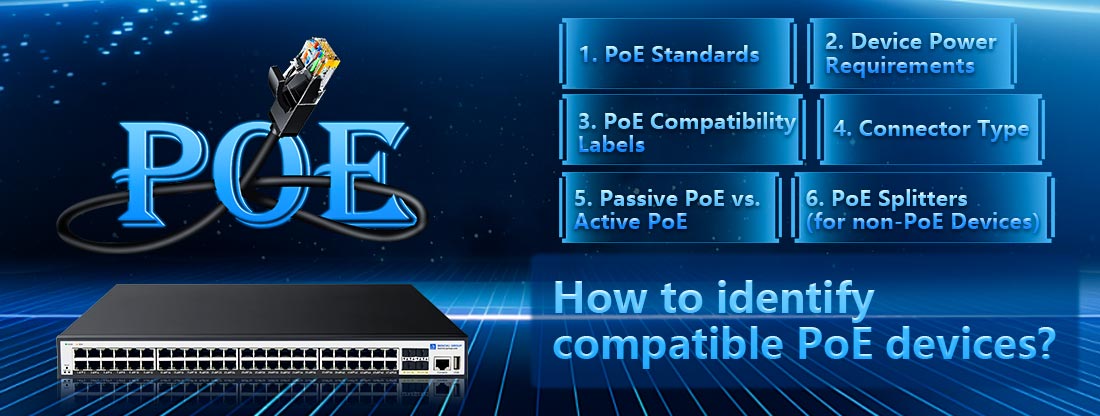
To identify compatible PoE devices, it's essential to look at certain technical specifications and standards. Here are the key factors to help you determine compatibility:
1. PoE Standards
--- IEEE 802.3af (PoE): This standard provides up to 15.4 watts of power per port. Devices such as VoIP phones, wireless access points, and basic IP cameras typically use this standard.
--- IEEE 802.3at (PoE+): Also known as PoE Plus, this delivers up to 30 watts per port. It’s suited for more power-hungry devices like PTZ (Pan-Tilt-Zoom) cameras and more advanced access points.
IEEE 802.3bt (PoE++ or 4PPoE): There are two types under this standard:
--- Type 3: Supplies up to 60 watts per port.
--- Type 4: Delivers up to 100 watts per port. This standard supports high-power devices such as video conferencing systems, smart lighting, and industrial equipment.
To ensure compatibility, check which PoE standard your device supports and match it with the PoE standard of the switch.
2. Device Power Requirements
--- Look at the power rating of the device (in watts) to ensure that the PoE switch can deliver enough power. For example, if a device requires 20 watts of power, you’ll need at least a PoE+ (802.3at) switch since it provides up to 30 watts per port.
--- The power rating is typically listed in the device’s technical specifications or user manual.
3. PoE Compatibility Labels
--- Many devices will explicitly mention "PoE," "PoE+," or "PoE++" in their product description or packaging. This is a clear indicator of PoE compatibility.
--- If a device doesn’t mention any PoE standard, it may not be PoE-compatible.
4. Connector Type
--- PoE devices use standard RJ45 Ethernet ports to receive both power and data. Ensure that the device has this type of port.
5. Passive PoE vs. Active PoE
Active PoE: Complies with one of the IEEE PoE standards (e.g., 802.3af/at/bt). It includes smart power negotiation to ensure the correct amount of power is delivered.
Passive PoE: Does not follow these standards and requires a specific voltage. You must ensure that the switch can supply the exact voltage needed by the passive PoE device to avoid damage.
6. PoE Splitters (for non-PoE Devices)
--- Some non-PoE devices can still work with a PoE switch using a PoE splitter, which separates power and data at the device end. This is useful if you want to power a legacy device that doesn’t natively support PoE.
By checking these factors—standards, power requirements, compatibility labels, and connector types—you can easily determine if your device is PoE-compatible and identify the right PoE switch to power it.